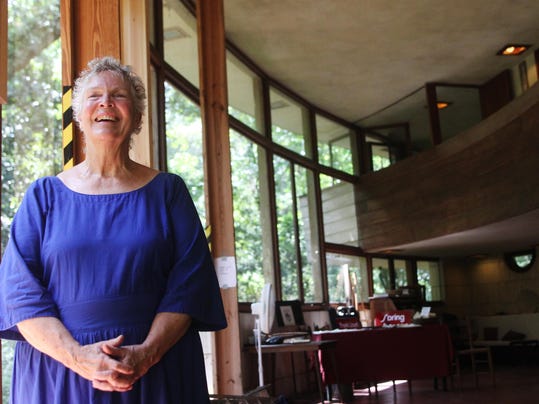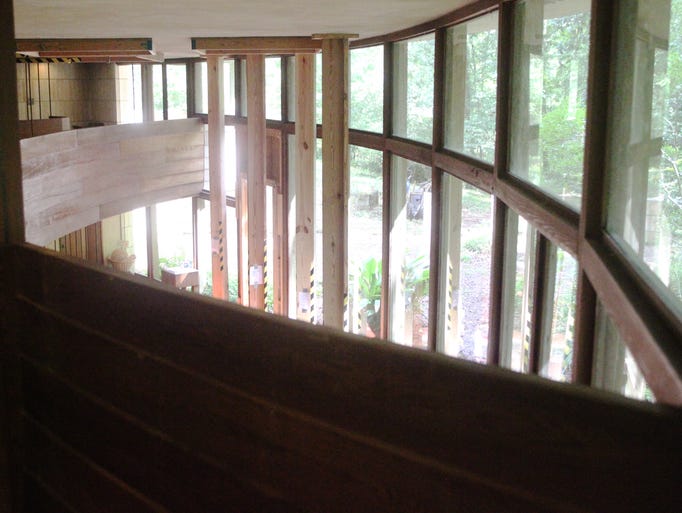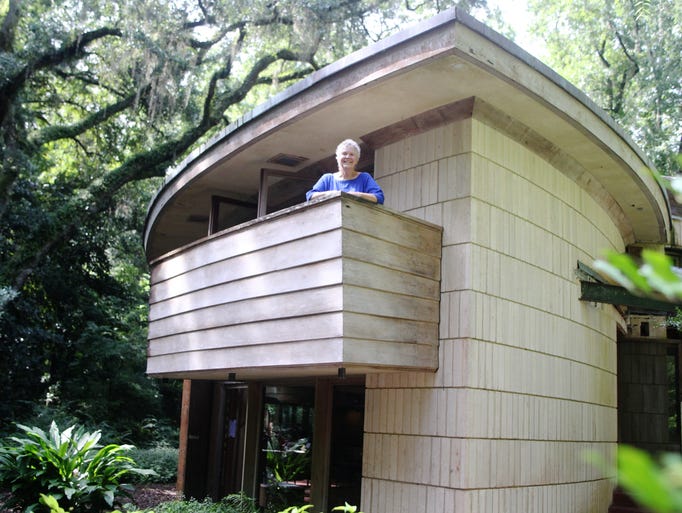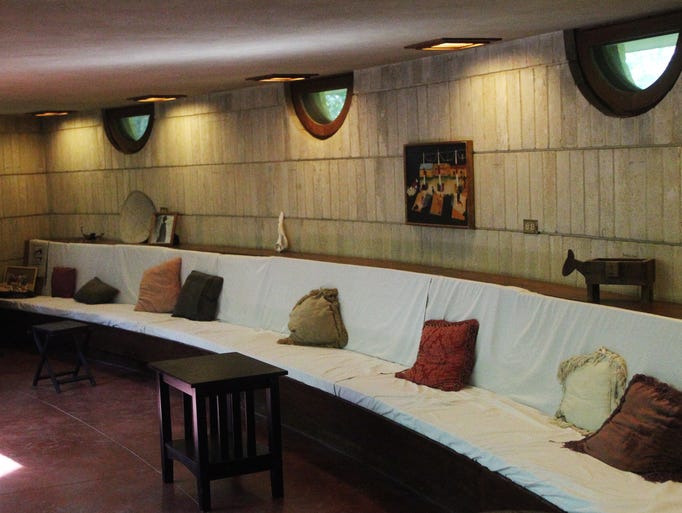
The Lewis House in Tallahassee, Florida, is one of his few “solar hemicycle” houses, owned now by Byrd Lewis Mashburn (pictured), the daughter of the original owners, who is raising funds and seeking volunteers for the house’s restoration. Empty for some years, “Mashburn said she is grateful now for the steady stream of visitors, but they are putting a strain on the 2,282-square-foot home. It needs repairs to its roof, plumbing and wiring systems.”
[The first owners] Clifton and George Lewis first met Wright in Lakeland at Florida Southern College, where Wright-designed structures dominate the campus. It was 1950 and Wright was on hand for the dedication of his new Administration Building. During a reception for Wright, the Lewises got in the long receiving line to meet the great architect and decided to pitch their idea for a new house. …
When Clifton met Wright she said: "Mr. Wright, we're the Lewises, and we are from Tallahassee. We have a lot of children and not much money, and we hope you will do a house for us.”
George, who worked for his family's bank, the Lewis State Bank, finally bought five wooded acres south of Lake Jackson that included a stream and a spring. They sent topographic maps and photos off to Wright. The house and the land cost $48,000.
The house was added to the National Register of Historic Place in 1979. Members of the Lewis family lived there until 2010.
The colourful and iconoclastic Clifton Lewis, who was also one of the founders of the LeMoyne Center for the Visual Arts, The Tallahassee Museum and a foot soldier in Tallahassee's civil rights movement of the early '60s, died in February 2014. She was 94.
"We still have the opportunity for it to be saved for public use," Mashburn said. "That's what our parents wanted. They wanted other people to have this amazing experience - not as a museum - but as a place where you can come and have your graduation party. Later on, it will be a wonderful place for a honeymoon. And occasional weekends and overnight visits for people. ... It's just a wonderful place."
For more on Spring House, visit www.preservespringhouse.org .
[Pics and video by USA Today, Spring House Institute, and Preserve Spring House]





3 comments:
A lot of Wright's houses seem to need 'restoration and maintenance'. Is that just natural process of time on older houses, or because he was pushing the envelope design-wise (perhaps in view of materials available)?
A bit of both really, but perhaps most important it's:
* a function of the aging of owners as well, many of whom are original owners, and
* most natural materials need regular maintenance, which becomes more difficult as these owners age. (This house is a good example.)
Also
* as houses did change hands, owners changed quite a few things in the houses for the worst, which newer owners wish to undo, where possible, or to put back what was missing. (The Martin House is a good example.)
* some houses being "restored" are actually being moved, such as the house in New Jersey next to a stream changing course, or the Pope-Leighy House that was moved to a different state!
Remember that these houses I"ve mentioned here recently were built well over 60 or so years ago, and some more than 100 years ago. And many, like the Lewis house may not have been maintained for years, or even abandoned as older folk move into retirement homes. In many parts of the US, abandonment causes severe problems with the likes of burst pipes from freezing and re-freezing, or severe humiidity encouraging damaging moisture and mould growth.
PS: Also note that I've been picking up posts of Wright Houses in the news, the reason for which is often restoration. Around 500 of his houses were built; not all are being restored.
The account I read of Ayn Rand's stay at Wright's house was that it was unfinished and falling to bits even in its prime. The architect was not interested in the interior or livability of the home. Architecture rather than execution and endurance was what he valued.
Post a Comment